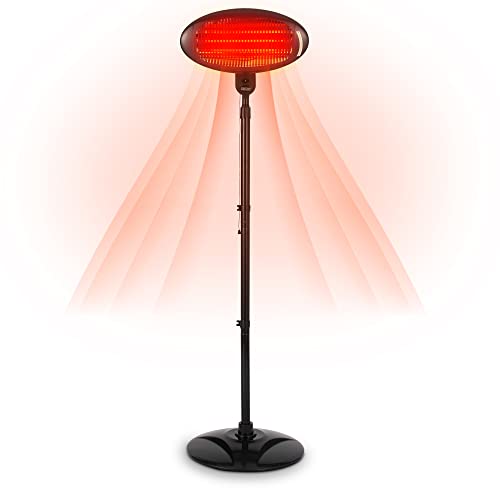How to Choose a Patio Heat Lamp Electric
There are a variety of options when it comes to heating your patio. Electric heaters are more efficient than propane models which require fuel refills. They can be heated instantly by pressing a button or flicking a switch.
They don't emit gases that could be a health hazard. Certain units come with adjustable heat settings to allow for different distances.
Heater Type
You can enjoy your outdoor living space well into the evening and throughout the seasons with the right patio heater. There are a variety of heaters for patios, including freestanding propane and natural gas models, as also ceiling- or wall-mounted electric radiant heaters. The choice you make will depend on the dimensions of the area, the power sources and personal preference.
The majority of patio heaters are powered by electricity or liquid or natural gas and emit heat via a combination of convection and radiant heating. Their output of heat is measured in watts and can be converted to British thermal units (BTUs) for comparison. Some models can be adjusted in temperature settings that give you more flexibility.
Patio heat lamps incorporate an electric burner on a pole, and a perforated screen that reflects flames and radiates heat downwards to warm objects, people and furniture. Some have an reflector on top of the burner, which can be silvered to reduce the amount of heat lost upwards.
Recommended Web site are among the most common patio heaters. They can heat multiple tables quickly and evenly. These heaters are portable and run from a propane tank or plumbed into your natural gas line, with the latter providing more convenience and lower cost of installation, but requiring an ongoing cost of fuel.
A increasing number of homes are equipped with natural gas lines, making them the ideal option for those who prefer to use a gas-powered patio heater. These heaters are easy to install, but they require a gas line that's properly installed and functioning to be secure. Portable natural gas heaters come with extension hoses to overcome this limitation, but these can be a tripping hazard and may pose an additional fire risk when not in use.
Safety
Electric patio heaters can be used safely in enclosed areas since they allow heat to radiate upward and not outwards. However, they're not intended to be used under an open roof; the heater should be set at least 18" from the walls adjacent to it or 6" from the ceiling to prevent fire hazards.
The propane and gas patio heaters can only be used in enclosed areas that have an enduring cover made for outdoor use. These types of covers are typically made from fire-resistant canvas and come with a roof that can be closed. These types of patio heaters have safety concerns related to the fumes and flames they create. They should be placed away from items that ignite, such as curtains and chairs.
When installing a patio heat lamp electric or any other type of patio heater, always adhere to the manufacturer's instructions and safety precautions carefully. Choose a model that has been awarded UL and CSA safety certifications and be sure to read the user's instruction manual thoroughly. Make sure that the heater is not within reach of pets and children. Some patio heaters that are freestanding like EUROM come with a built-in tipping safety that shuts down the device in the event that it falls over.

If electric pyramid patio heater on a natural gas line, it's important to check the condition of the line on a regular basis and test it for leaks by a certified professional. If the line has to be replaced, be certain to get an authorized plumber. A professional can determine if the line has been properly routed or should be routed through an underground pipe. A professional can also ensure that the heater in the patio is plugged into an outlet that is GFCI (ground fault circuit interrupter) rated to protect against electrical fires and shocks.
Installation
The the height at which a patio heater is placed affects how much heat it will radiate into the space. It is essential that the heater be mounted in a safe distance from the surface like plastic, which can deform as well as wood, which may get too hot. It is possible to mount the heater on a wall, structure or any other surface with standard mounting brackets. Some models feature a soft starter, which reduces the maximum current to safeguard your circuits.
